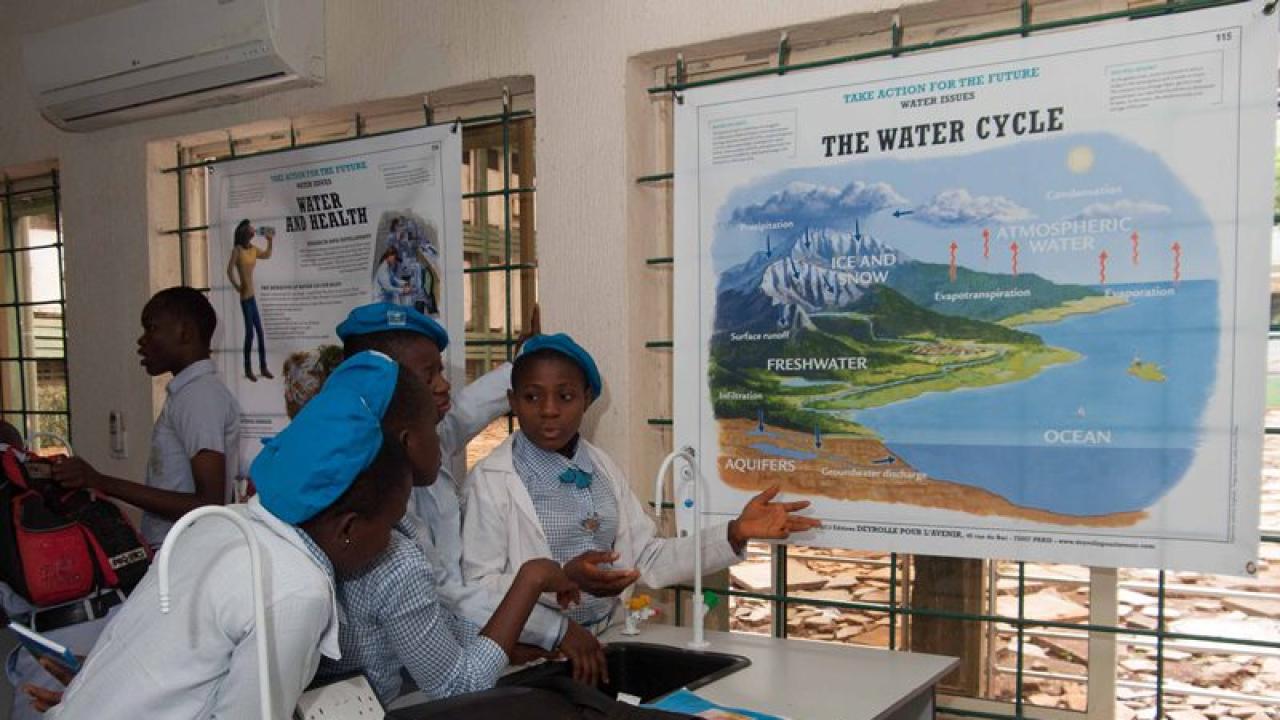
Some 2700 academics, students, school pupils and their teachers converged on the University of Nigeria on 17 to 21 June for a week of hands-on learning in science and engineering.
Separate workshops targeted university students, university instructors and over 2000 school pupils between 13 and16 years old, three-quarters of them girls. The workshops had three core tracks: mobile learning, engineering and microscience.
The mobile learning workshops demonstrated how teachers could work with students to design applications for mobile phones. The course was run by Clement Onime from the Abdus Salam International Centre for Theoretical Physics, along with experts from Pakistan, Saudi Arabia and Trinidad and Tobago, as well as UNESCO's own Mark West. Dr. Fareeha Zafar from Pakistan designed an application for smartphones which was donated to the university once the workshop was over.
Susanna Ackermann, of Intel, demonstrated an innovative 'eye-patch' lens that transforms the cameras on laptop and tablet computers into a powerful microscope which can be used to detect motion and take time-lapsed imagery. According to Intel, the lens supports up to 60 different experiments and is currently being marketed in South Africa.
Instructors were introduced to augmented reality, a process by which a digital device allows a user to manipulate items that are not in the physical world. Clement Onime demonstrated how students could, for example, create a virtual circuit board by manipulating objects under the web camera of a tablet computer.
The objects are moved across a piece of patterned paper but appear on the screen of the tablet as transistors and wires. This technology opens up numerous avenues for learning, particularly in contexts where access to actual circuit boards and materials are unavailable or prohibitively expensive.
The University of Nigeria has a new physics and chemistry laboratory but experimentation in engineering is uncommon for lack of modern equipment. One aim of the fair was to demonstrate that you can perform experiments without expensive equipment and, above all, that you cannot teach science and engineering without hands-on learning.
The engineering workshops were a blend of experimentation and lectures on four themes: shelter, transportation, water filtration and micro-hydro power generation. In one experiment, students were given a plastic bottle and cup, cork, copper wire and magnets and asked to build a micro-hydro turbine. The idea was for the magnet to turn the rotor (copper wire) and turbine (the plastic cup cut into a coil shape), thus generating a small current when water was passed over it. On the second day, one student replaced the cork in his apparatus with the rubber sole of his sandal, an improvement subsequently incorporated into the experiment.
These workshops were run by Engineers Without Borders (EWB) in the UK and Rovani Sigamoney from UNESCO, who were accompanied by Nigerian representatives of EWB and the Institute of Electrical and Electronics Engineers.
In the microscience workshops, school pupils tried their hand at filtering water and mixing chemicals, under the watchful eye of Imteyaz Khodobux and Osu Otu from UNESCO. The teenagers were shown how to use miniature plastic kits promoted by UNESCO within its longstanding Global Microscience Experiments programme.
The week wouldn't have been complete without a talk by Professor Francisca Nneka Okeke from the University of Nigeria, one of this year's five l'Oréal-UNESCO laureates for Women in Science. Professor Nneka Okeke studies the ionosphere situated between 50 kilometers and 1000 kilometers above the Earth's surface. She spoke of her career and her passion for science to a spellbound auditorium.
Participation in the science fair was funded entirely by the International Institute for Biotechnology, which operates under the auspices of UNESCO. Hosted by the University of Nigeria, the institute opened its doors earlier this year.
















